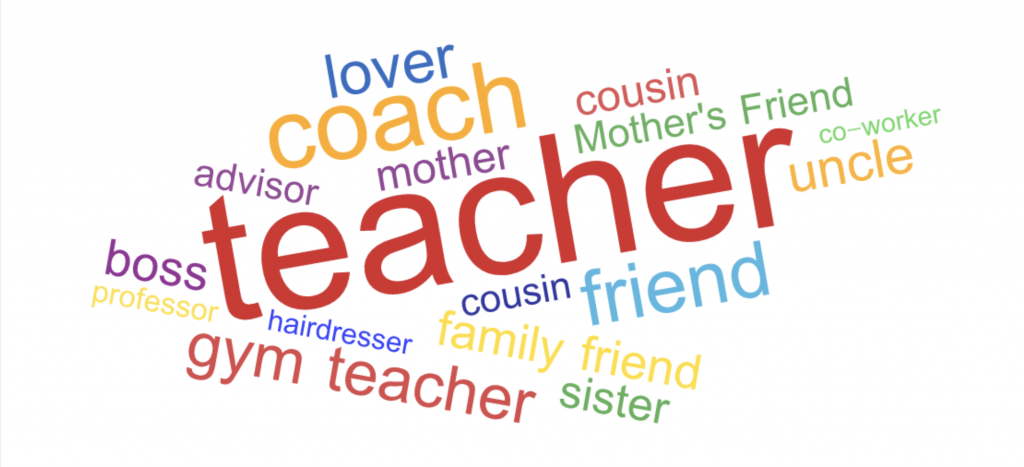Although the 1982 SCLA survey focuses on students’ experiences at Smith, it also asks a variety of questions about the respondents’ relationships with their family and friends from home. Of the students who identified as lesbian or gay, the median age that they first identified as such was 19, and only 12% identified as LGBT before the age of 16. 1
The survey asks about the first times that the respondents understood lesbianism. The vast majority (70.9%) first learned what the term “lesbian” meant between the ages of 11 to 15, with a median age of 13. 2 Some wrote about being “fascinated” or “curious” about lesbians from a young age, but others reported being “repulsed,” “scared,” “intimidated,” or thinking the idea was “gross” or “deviant” when they first heard about it. 3
By the time the respondents arrived at Smith, 46.7% reported feeling somewhat positive or very positive about lesbianism, 28.7% reported feeling neutral or indifferent, and 24.6% reported feeling somewhat negative or very negative by the time they arrived at Smith. 4 One wrote she was afraid she might “become one” if she went to Smith, but others noted that they didn’t really understand lesbianism until they came to Smith. 5
When asked about early examples of gay people in their lives, respondents reported a wide variety of people they suspected or knew to be gay. The word cloud below shows the terms people used to describe the people they knew or thought to be gay when they were growing up. Clearly teachers and gym teachers were a strong source of LGBT representation for many of the students, although many had mixed feelings about the LGBT individuals in their lives.

Though no question explicitly asked the respondents if they were ‘out’ to their family, the survey asked if the students had talked to their families about lesbianism. 64% of the respondents said that they had discussed lesbianism/homosexuality with their father at some point, and 83.6% said they had discussed it with their mother. For 67.6% of the conversations with their mothers and 59.2% of conversations with their fathers, lesbianism/homosexuality had come up in conversations “as an aspect of Smith.” 6 One stated that the “discussion resulted from the media releases about lesbianism at Smith” and another mentioned lesbianism coming up “as it related to Northampton ‘townies.’” [Ibid., 83, 77.] Clearly, Smith’s reputation surrounding lesbianism caused many of the respondents to choose to, or have to, discuss lesbianism with their families.
Lesbian and bisexual Smith students had unique relationships to their family and sexuality. You can learn more about these topics on pages 75-98 of the report.

- Lesbian Alliance Student Survey Results, May 1983, CA-MS-00112, Box 3016.1, Folder 8, Lesbian Bisexual Transgender Alliance Records, Smith College Archives, https://findingaids.smith.edu/repositories/4/resources/16/collection_organization, 74. ↩
- Ibid., 63. ↩
- Ibid., 64-67. ↩
- Ibid., 63. ↩
- Ibid., 64-69. ↩
- Ibid., 75, 78. ↩
